Blog Loss How To Create Blog Love Life Loss Kids
11 Nov Dealing With Grief
Posted at 20:46h in Articles 0 Comments
How to Find Support For Dealing With Grief
The Buddha asks Kisa Gotami, who is deep in grief:
"Bring me a mustard seed but it must be taken from a house where no one residing in the house has ever lost a family member. Bring this seed back to me and your son will come back to life."
When we really need help, what are supportive ways for dealing with grief and loss? In the Buddhist story Kisa Gotami a grieving mother, asks the Buddha for help. Like Kisa Gotami, the reality that 'everything you love you will lose' (Francis Weller's 1st Gate) may not touch you until you are in the clutches of grief. Kisa Gotami goes to her village, where she begins to find others who know the experience of grief.
Grief is an initiation. It is an inevitable part of being human, as Kisa Gotami discovers. Everything changes and everyone dies in the natural cycle, so at some point someone or something that we love will end. How we cope with the complex emotions of grief when it comes, is the challenge. Grief Tending is one way to find support for dealing with grief. It is a group practice to process grief.
How do I Find Support?
Before people come to a Grief Tending workshop, we ask that they connect with additional support during and also after the event. In this article I try to map some of the different ways to find support in order to process grief. Any of the following approaches may be useful when looking for support when working with Grief Tending as an occasional or regular practice.
Healing Grief
Healing grief may be what we long for, but to begin a journey towards acceptance we may need to find support. Our grief is a unique experience, and what each person needs will be different. When or if we feel safe enough to give space to our emotions will also be different. When we trust another person, we may be able to co-regulate our nervous systems so that we can give time and attention to our feelings. Feeling supported or 'held' may happen with the right conditions, with one person or in a group. We can only begin to heal from trauma when we have enough support.
The Fried Egg Theory
One way of looking at recovery from grief, also known as the 'fried egg theory', is when the grief stays just as big, but life begins to grow around it.
Lois Tonkin who puts forward this theory writes:
"What helps some clients about this model (and it does not fit everyone) is that it relieves them of the expectation that their grief should largely go away. It explains the dark days, and also describes the richness and depth the experience of grief has given to their lives".
From 'Growing around grief – another way of looking at grief and recovery' by Lois Tonkin.
Support for Dealing With Grief
Communities and our sense of belonging vary widely. Sometimes there is a wide range of inter-relationships and open communication between people. Perhaps there is an existing network of support for dealing with grief. There may be traditions, healers and practices to call on, especially around coping with death and dying. We may find intact or partial traditions that are recognisable in our own families, communities or faith teachings that may help us to deal with grief.
However, for a huge number of people it can feel as though grief is something that they are left to deal with on their own. Perhaps there are some traditional ways of grieving in their own background, but they don't feel a connection with them. There may be practices that were more familiar to previous generations, which have been forgotten.
Weaving A 'Basket' of Support
In order to heal, we need to weave a basket of different kinds of support together. What this comprises is up to you. Start where you are and figure out what you need first.
Some of us have better developed networks of support than others. This may include people to talk to – friends, family, neighbours, work colleagues and health professionals. If we have financial resources, we may have more options to find a place to take our sorrows – a therapist, or body worker perhaps. If we are lucky, we may be able to access counselling services through a local organisation such as a hospice support group. There may be a charity or help line which serves as an emergency safety net for us in crisis. Links to crisis support here.
Finding Help for Dealing With Grief to Build Resilience
This is a brief over-view of some of the different kinds of support available for working with grief. This is not an exclusive list, and is intended as a rough guide to inspire further research and exploration. Always trust your gut feeling of what feels right for you right now. Most practitioners and therapists will welcome questions about how they work and whether they can meet your needs. Every person's experience of grief is unique and each journey of learning how to cope with grief is different. You may want to include approaches that complement each other.
One to One Support Versus a Group for Dealing With Grief
One to one sessions will be tailored to your specific focus, with time to unfold your story. This is particularly helpful if you are dealing with intense grief or recent bereavement. Groups can offer witnessing, and shared understanding. Trust your intuition on what appeals to you. These two ways of working can support and complement each other. It is important to recognise that different approaches will suit different people, budgets or be helpful at different times.
Grief Tending Workshop
A short Grief Tending workshop (one day or less) can be a great introduction to the practice of Grief Tending in community. Ideally attention is given to both what supports us, and to our grief. A group comes together with a facilitator where participants can give space to their grief, without attempting to fix or change anything. There is usually a central practice or ritual, such as a Grief Circle, where participants have the chance to express how they feel. Witnessing each other can be powerful and helps us to recognise we are not the only person mourning.
Grief Tending Retreat
A longer Grief Tending retreat may last for a weekend, or a few days. Co-facilitated by a team, this is an opportunity to explore grief more deeply as part of a group journey. The extended time allows greater trust to develop between group members. Over several days, feelings have a chance to unfold more fully than on a short grief workshop. Grief Tending involves rituals to share feelings, embodiment exercises and may include time in nature. The practice of Grief Tending blends wisdom and inspiration from different teachers and includes both psycho-education tools and the opportunity for inner work.
Grief Circle
This is usually a facilitated space to talk on the theme of grief, where participants are given an equal chance to express something. A Grief Circle may be used as part of a longer Grief Tending event.
Death Cafe
This is a space where a group of strangers come together for conversation around the theme of death, usually over tea and cake. It is not intended as a therapeutic space, although it can be a relief to talk openly on the subject. A Death Cafe can be a good introduction to speaking in front of others about what can be a taboo subject. They are short not-for-profit events that happen in a range of locations.
Support Group
A support group usually gathers together people who are dealing with a specific challenge to meet at regular intervals over time. A support group is usually facilitated by a therapist. Bereavement or one specific source of loss may be the theme of a support group.
Group Therapy
An ongoing therapy group or group therapy can help us to explore our themes in relation to others. This is usually facilitated by a therapist. Participating in a facilitated group can help to uncover dynamics and blind spots in the way we operate with other people. It may be a closed group that meets regularly over an extended period of time. Sometimes there is a common theme, such as a women's group or a men's group.
Family Constellations
When working with sticky problems that seem to keep repeating, it can be really helpful to consult a Family Constellations practitioner. Often systemic patterns that we are unaware of and have nothing to do with our direct actions have travelled through our family lines. Whether passed down through styles of nurture, the epigenetics of trauma or something less tangible, ancestral grief can be a weight we are carrying from past generations. It may be particularly helpful where grief or repeating challenges such as addictions travel across generations. A Constellator may work in person, online, one to one, or in a group setting.
Crisis Support Helplines
Helplines are usually run by charities. They are excellent resources in a time of urgent crisis. They are often open long hours and can provide help when you have no-where to turn, or feel in acute need. If you are in a mental health crisis or feel despair, reaching out to a crisis helpline or your GP can be a life saver. If you are supporting someone who is in acute grief or despair, Grassroots offer excellent online resources.
One to One Counselling
Counselling is available one to one as a space to be heard. This may be offered as a brief course of talking sessions. It may be on a specific theme, such as 'bereavement counselling'. This may be something that is available through a charity. Therapy tends to be a more open-ended process that delves more deeply into the unconscious material brought by the client. The main differences between a counselling and therapy are usually length of training and governing body.
Co-counselling
Co-counselling is reciprocal peer counselling. Taking a co-counselling training course can be a first step in developing tools such as Active Listening in order to give as well as receive support.
Cognitive Behavioural Therapy
CBT as it is usually referred to is a specific technique used to change negative patterns of thought or behaviour. It is a psycho-educational tool that can be taught. It is useful for some people, particularly if working with changing specific outcomes alongside other supportive measures.
Psychotherapy
Talking therapy is usually available through a private psychotherapist. This might involve a focused series of sessions on a theme, such as bereavement, or a wider reaching open-ended conversation. Psychotherapists differ in style and ways of working. Some have specific approaches, such as Psychosynthesis or Internal Family Systems. A therapist has usually trained over several years. A first session will often be a chance to explore what you hope for and whether you feel that the therapist is a good fit for you.
Body-Centred Psychotherapy
The therapist will explore the themes you bring through paying attention to the responses, sensations and symptoms in your body. Ask the therapist about the way they work, and whether it includes 'hands on' work. An embodied approach is particularly helpful when working with grief. The body can provide helpful clues when we are working with buried or hard to reach feelings. Sensorimotor Psychotherapy may be what you are looking for.
Body Work
There are many different techniques of hands-on bodywork. This may be gentle, soothing touch such as energy healing, cranial osteopathy or relaxing massage. Other techniques work more actively with physical symptoms and stress loads, such as acupuncture, breath work, and Grindberg Method. Sessions of body work can also complement other therapeutic modalities.
Trauma Work
If you are uncovering layers of challenging material, or have a complex history of trauma, I recommend a therapeutic approach that includes body and mind. For a complex history of adverse childhood experiences, a modality like Somatic Experiencing, Co-regulating Touch, or Sensorimotor Psychotherapy or Reverse Therapy may all be helpful. For symptoms of burnout, there may be an underlying history which would benefit from this approach. Find a practitioner that works in a 'trauma-informed' or 'trauma-sensitive' way.
Single Traumatic Incident
EMDR is a specific technique that has good results in recovery from the impact of a specific traumatic incident.
Nature Based Therapy
Finding connection with the natural world can be a powerful place to find support. Different kinds of therapy are becoming available outdoors – whether talking therapies, healing with animals, forest bathing or a shamanic vision quest. Here is a directory of Nature and Health Practitioners. Nature connection also begins with spending time close to the nature, whether that's tending a window box, gardening, walking in the park or climbing a mountain.
Expressive Arts Therapy
Drama, art, dance, music and singing are all practices that can be used to unfold feelings either indirectly or directly with a drama therapist, art therapist or practitioner who works with sound or movement. Movement practices like 5 Rhythms can also provide a 'conscious' or 'ecstatic' dance space to explore feelings, sensations, and have fun.
Weaving a Basket of Personal Support
Most people have things that they turn to in times of trouble. Many people consider themselves 'spiritual but not religious', and have developed their own ways to feel held by the beyond-human world. We encourage participants of our workshops to think about sources of support for coping with grief. It can really help us to deal with grief if we can identify the people, places, objects, activities and practices that support us.
What makes you feel grounded, connected, inspired or safe? More than ever when we grieve, we need to lean into the things that bring us comfort, connection and relief. In tough times it can be really helpful to have a list of supportive things to remember. You may not have considered them as grief support before. Carolyn Spring's Emergency Box has a great list of things to reach for when you are feeling desperate.
Supportive People
Who are the people who you trust, and can rely on to be there in times of need? I like to actively acknowledge my need for support from close friends, and pay attention to weaving a 'basket of support'. Who inspires you? These might be people you know, but also writers or teachers whose work speaks to you.
Support Objects
We often invite participants to bring a 'support object' to a Grief Tending session. This might be something that reminds you of positive qualities, or something that you like the feel of. You may have many objects and images that are talismans of things that you love, or are associated with someone you love. A support object could also be something that looks mundane but that helps you to keep going in life. This object might act as a 'touch stone' in your pocket or remind you that you are loved. What objects are significant to you?
Support Practices
What makes you feel good? This may include physical activities such as walking, swimming, and running. You may also enjoy more inner experiences like meditation, chanting, yoga-nidra, reading or doing soduku. Don't forget things that bring you pleasure, which might include dancing, cooking your favourite foods, and going to exhibitions. Are there self-care practices that make you feel better, which you could make more of a priority? I like to skin-brush, take a salt bath, go to a sauna, keep a list of compliments to use when I feel low. What works for you?
Is there something creative that can give you a chance to express yourself and soothe your nervous system? This might include knitting, crafting, drawing, puzzling or writing poetry. Gentle self-touch exercises can be really helpful too, especially as a practice for returning from an activated nervous system.
Support Places
Is there a place that you feel good in? Perhaps there is a public building that inspires you. Somewhere in nature may fill you with awe. Or a supportive place may be a particular tree, a 'sit spot' or going to a favourite beauty spot. Perhaps you need to visit the sea regularly, or plan a special walk? Maybe there is a corner of a room that you can make a cosy nest in? Is there somewhere that takes you out of yourself by offering beauty or mental stimulation? Perhaps you like being among people in a café, at the library or solitary in a tent?
Support Rituals
Do you have rituals that bring you comfort, grounding or support? Perhaps you like to start the day in a particular way. It might be as simple as drinking coffee from a special cup? What are the personal or home rituals that you enjoy? I notice that when I make time for my daily prayerful ritual before doing anything else it sets me up for the day. It connects me with my highest intention, and makes me feel part of the web of life. What works for you to create intentional support in your life?
Grief Tending as Support for Dealing with Grief
We ask the participants of our Grief Tending workshops to commit to checking in with someone supportive after an event. Grief Tending can be a one-off resource, or sit alongside other forms of support. It can complement one to one work, offering a shared group experience.
We all have our unique histories and experiences of the world, which one to one sessions can unfold over time. Discovering our shared humanity and witnessing others' courage and vulnerability in community are benefits of Grief Tending.
Like Kisa Gotami's village, each person who comes to tend their grief is unable to find a mustard seed that come from a household untainted by loss, death or change. The distraught Kisa Gotama who grieves in each of us finds empathy and support through being vulnerable. But we can only be vulnerable when we feel supported enough.
21 Oct A Queer Perspective

I totally celebrate who I am now – a bisexual person, married and in a committed triad. I am lucky to have had an incredible journey of life so far, discovering love for myself and others. But love and loss weave together. In offering a 'Queer and GSRD' (Gender, Sexuality and Relationship Diversity) Grief Tending session, I have been thinking about grief from a queer perspective.
Francis Weller's 'Gates of Grief' can be useful lenses to look at our life experiences. These Gates are helpful to understand 'grief' as a range of emotions caused by a much wider range of circumstances than bereavement. Everyone's histories are different, and people will be affected in different ways. Here are some of the ways grief that is specifically queer has shown up in my life, seen through these 'Gates'.
'All that we love we will lose'
Sitting with a cousin that I loved as he died of an AIDS-related illness.
'The places that did not receive love'
My shame and disconnection did not allow me to make the link between hidden parts of myself – my butch teen image, secret compulsion to draw naked women and my sexuality.
'The sorrows of the world'
Have you seen 'Welcome to Chechnya'? It's a terrifying reminder of places in the world where different attitudes to gender, sexuality and relationship diversity are not welcome.
'What we expected but did not receive'
Where were the elders and role models to support, welcome and educate me around puberty and sexuality?
'Ancestral grief'
I received confusing internal messages, following the shame and repression that kept my father in the closet until he was 60, in a generation for whom being homosexual was illegal.
'The harm I have caused myself and others'(Sophy Banks' Gate)
Remembering times when I failed to really engage and empathise with my housemates while living in a lesbian community house.
You can read more about my personal story with Francis Weller's 'Gates of Grief' here.
If 'Embracing Grief – Queer and GSRD' speaks to you, you can see more details here.
19 Oct 'The Day That Went Missing – A Family's Story' by Richard Beard.
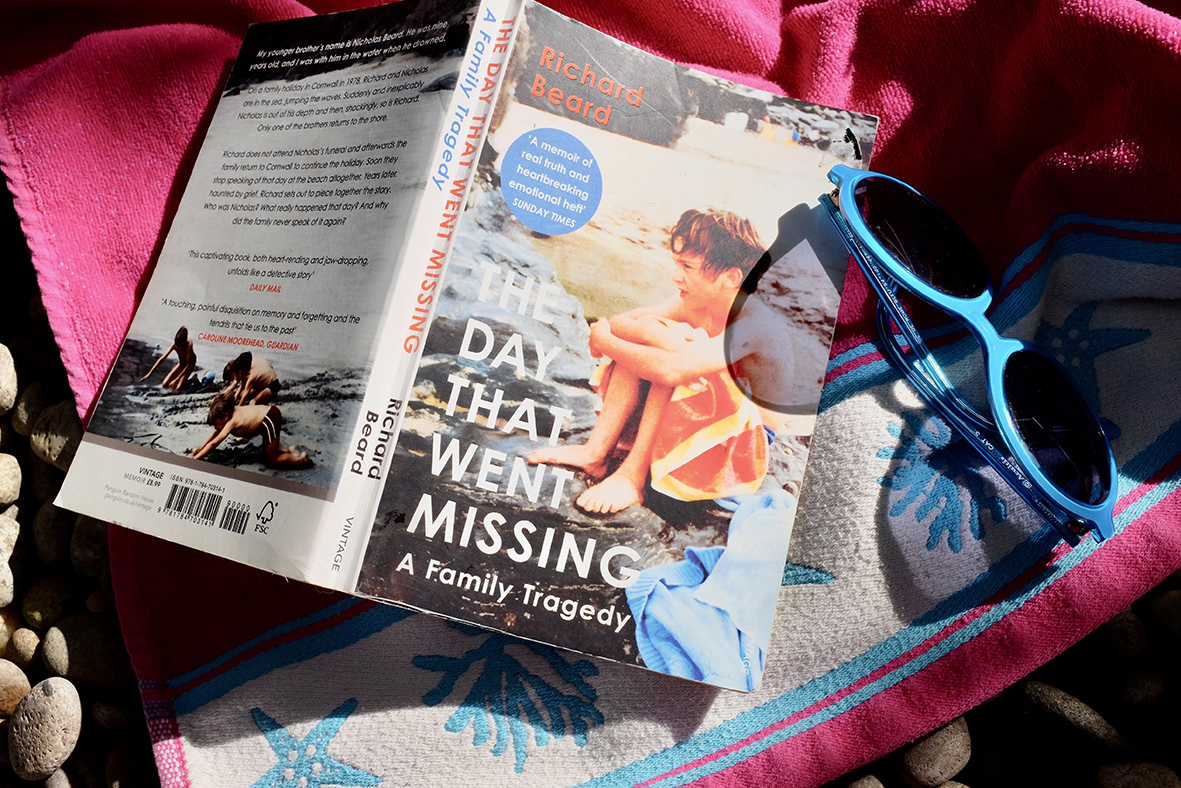
In examining the defences of his family, he recognises that "our project of denial has been a life time's work." In this very introspective enquiry, he shows us how these adaptive parts are gradually formed in the absence of space for the expression of grief. "…children and grandparents formulated a response to a world of unreasonable sorrow. We played Scrabble." He spirals in towards the central happening where, "I limp and run, and the wounded noise keeps rising and has nothing to do with my leg. The noise is inarticulate pain, grief that doesn't know how to express itself."
I felt my heart ache for his younger self, shut down in the face of tragedy, "Snap out of it! In that definingly English phrase, pull yourselves together. We could not accept in 1978 in Swindon, the notion of legitimate emotional trauma. We didn't respect emotion as a useful human response."
So many who seek out grief tending bring disconnection – which may have served them well as a survival compensation, but may now separate them from self and others.
Richard Beard's experience speaks to wider themes such as 'boarding school trauma,' and the culturally pervasive tendency for disconnection from "any emotional disturbance," popularised through maintaining a 'stiff upper lip'.
Splitting off from pain can be problematic, and for those wielding social and economic power others may pay the cost. Beard describes the mechanism by which "we were encouraged to dismiss our feelings for ourselves, and so lost the ability to feel for others." This is a book that looks under the carpet of privilege and the cost of maintaining a social image at the expense of the people involved.
19 Oct Death Amid Life
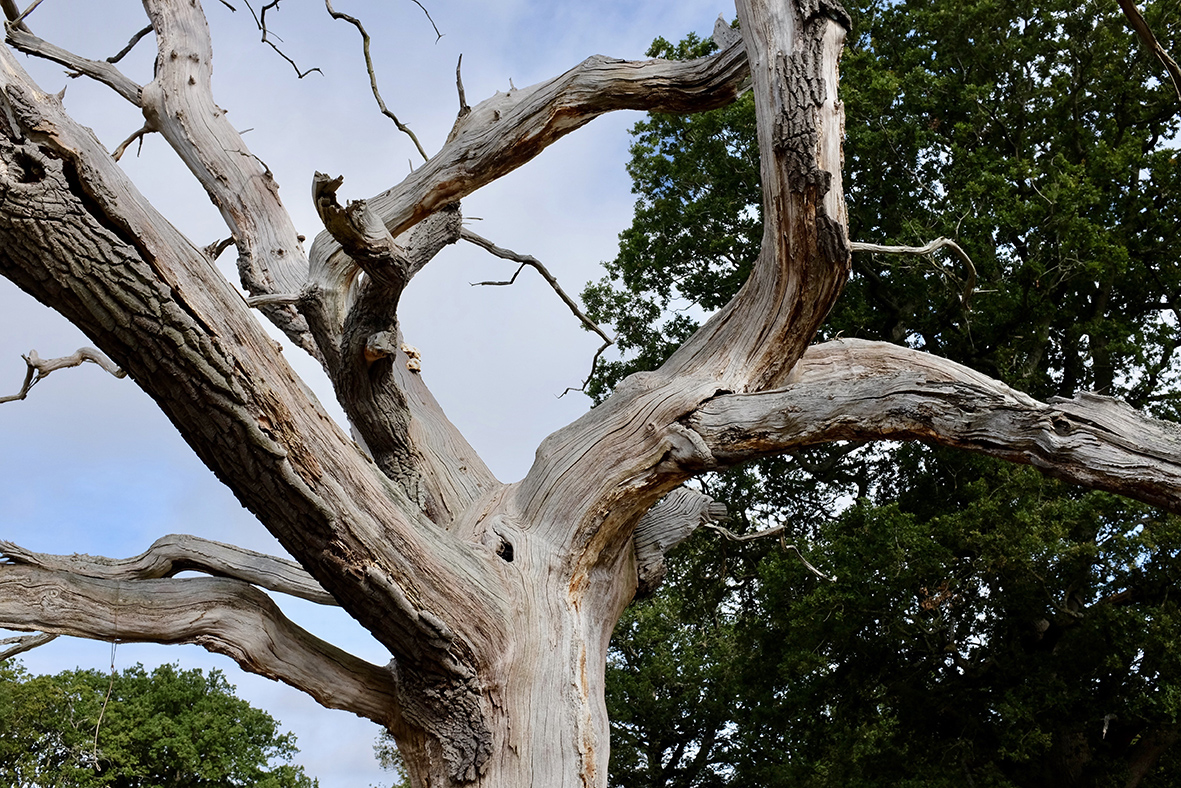
The juxtaposition of living and dead branches made me think about the way mortality is often hidden away. Which parts of my experience are minimised or unacknowledged, especially while invested in being positive and enjoying party time?
It also left me wondering who or what was less visible at the festival. I was conscious that those who had tested positive for COVID were absent, amongst others. In times of ill health, I have myself been 'the ghost at thefeast', slipping out of social engagements, or being less able to bring my energy forward. In the life cycle, which are the parts we celebrate and what is more uncomfortable?
I find it helpful to ask the questions which reveal what I may not be able to see. Personal circumstances – navigating changes, financial issues, as well as the minority stress of having an identity of difference may make us feel more or less included. Do I feel welcome in this space? Can I bring all of myself? I value spaces where all of me can be included, and all of you.
The balance for healthy and sustainable community is necessary. As individuals and groups, we need both pleasure and challenge. What brings me joy? How do I play and enjoy life? Celebrating together in community is as important as grieving together. When I hear music that moves my hips, I remember how much I love to dance. Even better if it's a communal experience.
19 Oct A Good Funeral
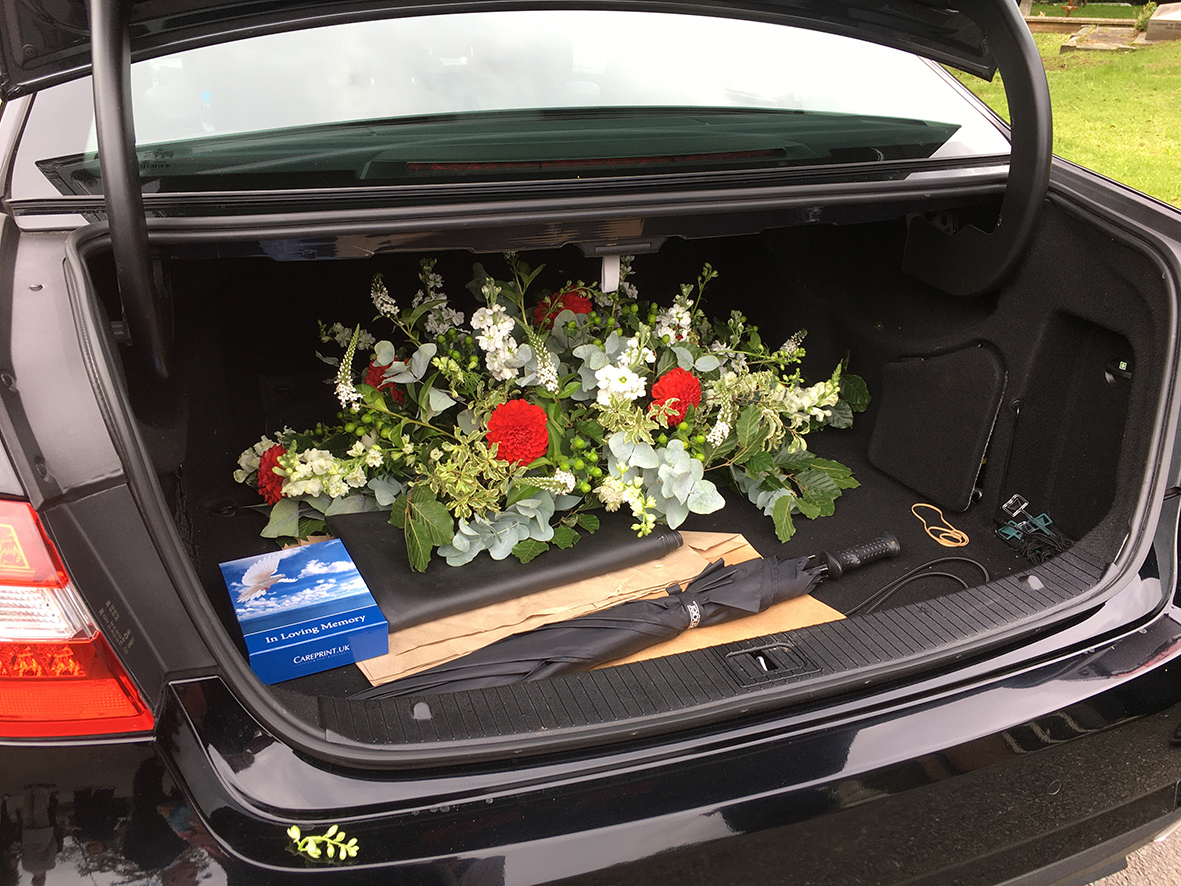
Like Harold and Maude, I enjoy a good funeral. For me, the design and execution of the event is satisfying when it is congruent with the deceased. Does it reflect the person who has died? Did I learn more about them? Did it give space for feelings? Was I able to participate in my own way?
As a child of a vicar, I saw inside the vestry and underneath the vicar's cassock. Church, crematorium and theatre all function with back-stage and public spaces. I always want to pull back the curtain, to look behind the door marked 'private'.
For the time of the ceremony there is a tableaux that may include coffin, flowers, music, mourners arranged in order of relationship. After the allotted time to mark the ending of a life, the scene dissolves, leaving empty vases and rows of chairs.
At the crematorium, there are curtains – which may or may not close, and a dais which may sink down or roll to disappear the coffin out of sight to complete the illusion.
The stage manager is the funeral director. The celebrant is supporting actor to the reluctant stars – the next of kin. We too, the audience are part of this immersive show; whether we shed tears, crumple tissues, or bow our heads.
The undertakes are the stage hands whose role is to attend the body and smooth us through the ceremony with practiced hands. This role is usually a traditional display of black, often with topper and tails. They move with respectful slow motion as they ease us along. With silent stealth they manage handles – hearse doors, coffin, chapel, and trip hazards – stone, marble or carpeted steps. Flowers appear and disappear, in this case into the boot of one of Poppy's hearses, to arrive where they are needed next.
There are choices to make. Many more than you might imagine in creating the final spectacle to best reflect a loved one. Most of these are optional. There are almost no rules in law about this occasion, excepting disposal of a body. I recommend 'The Dead Good Funeral Guide' to help plan a funeral. The Natural Death Centre is another resource for finding independent undertakers who are willing to work with you to create the funeral you want.e tells you all you need to know about creating a bespoke memorial event. Beyond Life is a good resource for finding your way through the maze when trying to work out what to do after someone has died.
15 Oct Ossuary
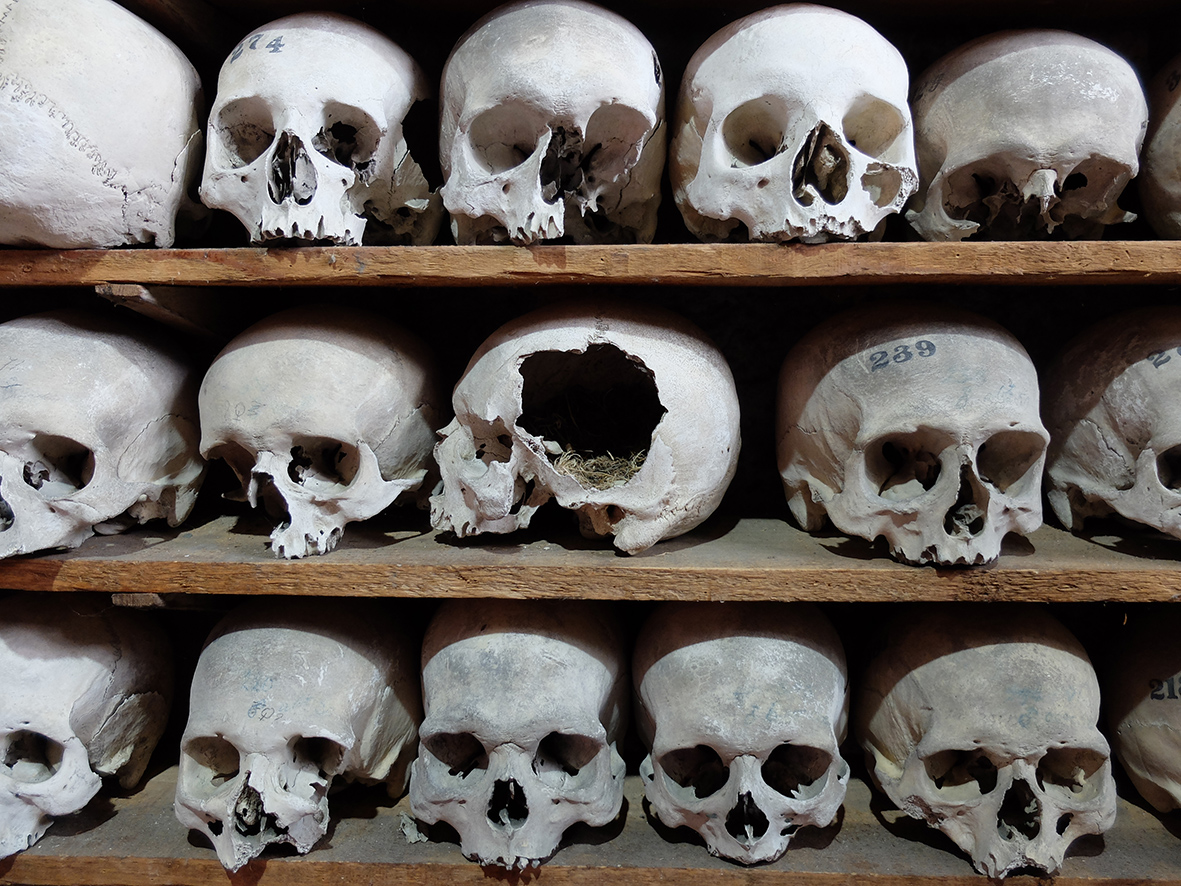
The Church of All Saints at Sedlec in the Czech Republic and The Skull Chapel in Kudowa, Poland are decorated in baroque style. Mojmir Horyna speculates about the meanings of such places in 'Momento Mori', a book of photographs of the Ossuary at Sedlec.
"The very building of the ossuary, as a place where the remains of the unknown dead were laid out in patterns, expressing hope in the resurrection, is also a fundamental expression of something else: it is an operation of human solidarity in the history of salvation, a solidarity which stretches across generations and centuries, which demolishes the empire of death and breaks through the temporal boundaries of the individual human life."
We came upon the ossuary in the crypt of St Leonard's Church, Hythe, in Kent by chance. It is small in comparison with some of the larger European ones, but a significant collection of around 1,200 skulls and includes the remains of around 2,000 people. The collection was first recorded in 1678 as 'an orderly pile of dead men's bones', although its exact origin is undocumented and many of the bones date much further back. It is housed in a small annexe of the church. There are four arched bays. Skulls rest on shelves to the ceiling, making an audience of ancestors peering at the visitors who have come to look back at them.
A large carefully balanced mound of femurs interspersed with skulls takes up the volume of about 2 cars. Some of the irresistible rounded foreheads and ball joints have been polished smooth by hands passing over the centuries. In the 21st century scientific inspection seems to take precedence over veneration. The focus of this gathering of the dead has become a library for study. Students investigate causes of death, ways of life, nutrition and dental decay.
It is easy to separate myself from these long dead creatures. I see their individual characteristics as part of a decorative pattern. I notice my curiosity at their differences – youth, age, bony protrusions, blunt-force traumas. The evidence of a nest lined with dried grass in one (bird or mouse?) delights me.
But there is an important lesson here amongst the dust, spiders and creeping green mould; a reminder that I too will one day stare hollow-eyed, a momento of a life once lived in solidarity with future beings.
16 Jul I'm Talking About Menopause
Posted at 14:37h in Articles by admin 1 Comment
 Why don't we talk about menopause?
Why don't we talk about menopause?
Why don't we talk about the menopause? Are we just embarrassed to speak about personal things? Or is it because the things that happen to our bodies are loaded with shame? In talking about it, we might risk showing our vulnerability. We are loaded in western capitalist society by unconscious messages about beauty and mortality. Youth, productivity and fertility are valued markers of success, rather than wrinkles and wisdom. It may also be because approaching our senior years reminds people that they will not live forever, the truth we all try to forget.
How can we talk to our peers about menopause? Media images encourage women in particular to compete at looking younger for longer. Is it because we daren't risk being rude or invasive that we don't ask or reveal to one another? Talking about the menopause may be just one taboo in a long list. We may not have talked about the things that came before this rite of passage – puberty, bleeding, pain, lost pregnancies, infertility, terminations, tampons, fibroids, sexually transmitted infections, our sexual encounters, our sexual pleasure, masturbation…
The metamorphosis of menopause
Like puberty, you don't know when the menopause will happen, and how it will land in your life. It is official a year after your final period. I see it effect the people around me in different ways. The most likely predictor for when it will happen is genetic. Early menopause can also come way before mid-life. This is less common, and is sadly much less widely recognised, as it arrives unexpected with many consequences. My final period came when I was 51, the average age, despite my first period being early. I now have a nostalgic fondness for copious bleeding and the earthy messiness of menstruation.
"Everything you cling to that's comfortable in its familiarity including your very identity is metamorphosing from the inside out," Christiane Northrup.
Up to 10 years of peri menopause
The piece of information I wish I had known ahead of time was that it may have a lead up of 4-5 or even up to 10 years of peri menopausal symptoms. Menopause can also come suddenly in response to surgical or medical situations.
Menopause used to be known as 'the change'; as though it was a single turning point in the transition from the archetype of mother to crone. My experience has been of a gradual process of transformation. With hindsight I can recognise difficult and sometimes dramatic symptoms in a lengthy peri menopause.
During, or perhaps as a consequence of peri menopause I was exploring my sexuality, and I enjoyed surges in sexual energy. At the same time, I needed to come to terms with infertility. There was grief in being unable to be a biological parent. I gradually let go of dreams of being a birth parent. This came with an enquiry into who I wanted to become. I weathered the emotional shifts as my creative energy was channelled into other new ventures.
"Our hormones are giving us an opportunity to see, once and for all, what we need to change in order to live honestly, fully and healthfully in the second half of our lives." Christiane Northrup
Navigating the changes of menopause
I was unprepared for the physiological changes. I did have encounters with medical professionals during gynaecological medical emergencies, but I found little information or support elsewhere. My mother couldn't remember how old she had been by the time I got around to asking. There was a distinct absence of elders to pass on their wisdom on the subject.
Davina McColl's refreshingly straight-talking documentary on Channel 4 'Sex, Myths and the Menopause' is a good starting point on the subject. Information can be found on websites such as Women's Health Concern – the patient arm of the British Menopause Society, Menopause Support and Menopause Matters. Look for independent reliable information that is not covert advertising for products, treatments or consultants.
There is still stigma and embarrassment in talking about menopause issues. Like other signs of mortality, talking about ageing can be taboo, worse still showing visible signs of it. I am aware that some people feel more invisible in the face of the physical changes of becoming mature. Others may redirect their energies into new endeavours with vigour.
The issues around menopause are not just 'women's business'. In a mission to make menopause more inclusive, Tania Glyde recognises that 'Queer Menopause' effects many including women, trans men and non-binary people. Whatever your identity, it is likely to include hormonal, physiological and emotional changes.
Menopause in Relationships
Friends, family and partners may be in different life phases, or moving towards elderhood in different ways. It may be complex to co-navigate changing needs and desires in lifestyle and relationships. After many years caring for others, I found myself with more time to invest in new interests that I hope will sustain me into the next phase of my life.
Coming to terms with changes in levels of desire, or response may precipitate exploration into what works for us sexually. If you haven't already considered what you still want to receive, or give, I recommend Betty Martin's 'Wheel of Consent'. Being menopausal doesn't mean we have to give up on intimate touch, although it's a great time to work out what we do want to share in relationships with others.
A rite of passage
Like most rites of passage, the route through menopause is a liminal journey of stages – preparation, threshold and return. Ideally there will be support and education during peri menopause, and adjustments made before the final period. The threshold occurs, but we may not know it until a year after it has happened. One of the things that I found tricky was not knowing when I had actually had my final period. There was a gap of six months and then a year between my penultimate and final periods.
During this time, we will be aware that our years of potential fertility or procreation have come to an end. As with any big life change, this transition is an opportunity to grieve what is ending. Our ability to recognise and face this letting go process will reflect how we feel about our achievements and regrets as our identity shifts. The health concerns that may have accompanied our menstruation cycles will also be factors.
As physiological changes happen, are we welcomed into a community? Do we have support in place for this new time of life? Do we have peers we can talk to? Is our GP willing to hear and respond to our concerns? Are we resourced enough to find the support we need to manage symptoms?
After all the changes that may accompany peri menopause, and then menopause, I notice an absence of marking this initiation. Will our arrival on the shores of eldership be acknowledged or better still celebrated? Is this the time, or will I have become a member of the older generation when my hair turns white, or when there are no longer any family members ahead of me?
The symptoms of menopause
There are many symptoms that may be part of the experience of menopause. Hot flushes, (hot flashes), poor memory, changes in sexual responses and vaginal dryness have affected me. Then there are night sweats and early morning anxiety which disrupt my sleep patterns. Symptoms may arrive suddenly or gradually then ease off or stick around.
I have experimented with a variety of alternative treatments to support my physical and emotional health at different times including Chinese herbs and Acupuncture, Grindberg Method, Cranial Osteopathy, Herbal Medicine and natural bioidentical hormone creams. This is in addition to taking food supplements, good nutrition and exercise. My family enjoyed regular yam patties for a while. Yam is one source of naturally occurring oestrogen, but quite an effort to mash.
One solution to ease vaginal dryness
If you want to avoid the graphic details of my journey with vaginal dryness, stop reading here. Vaginal dryness crept up on me, and I became reluctant to engage in penetrative sexual play until I discovered that regular activity in my vagina actually made the pain improve rather than worsen. I retreated from the dread of the words 'vaginal atrophy' by putting some practical steps into action.
Experimenting to find what works for me, I now have a daily practice of repeatedly inserting and removing a ribbed glass dildo into my vagina. You can find a selection at Women's 'adult emporium' Sh! and other adult stores including Love Honey. This stretches my vaginal sphincter and helps my vaginal walls to lubricate. I use a dollop of 'Yes VM' natural organic vaginal moisturiser. (Their lubes are great too.) Over time I built up to moving swiftly in and out for a couple of minutes. Now I do it about 70 times every morning just before brushing my teeth. When I began, this was an unimaginable goal. But it has over time reversed the pain and dryness which I was experiencing during intimate touch.
Anything that enhances blood flow to the pelvic area may help. Practices of self-pleasure that work for you are worth experimenting with. I find ribbed glass good for stimulating and stretching, and the glass has a cooling sensation. I wish someone had given me a few tips, so I hope this will be useful information to pass on.
On the other side of menopause
What am I like several years on from my last period? A more direct communication style has replaced some of the buffers of 'niceness'. I am more confident in who I am and what I want to do. My gender identity also feels less fixed, and also less important as my hair greys. Brain fog and memory lapses can make me feel at the edge of my capability, but I feel as though I have no time to waste, ready to offer my experience to the world as an elder in training.
My inexpert experiences here are a kind of coming out, to reveal what often remains unseen and unheard in the shadows. I value intergenerational work. The conversations I have with the extraordinary young people I come into contact with fill me with hope. The generations have such different perspectives and exposure to ideas around sexuality and the body. In writing this I offer an invitation to risk having conversations about the nitty gritty of life with elders and youngers alike.
27 Jun 'Dance Me to Death'
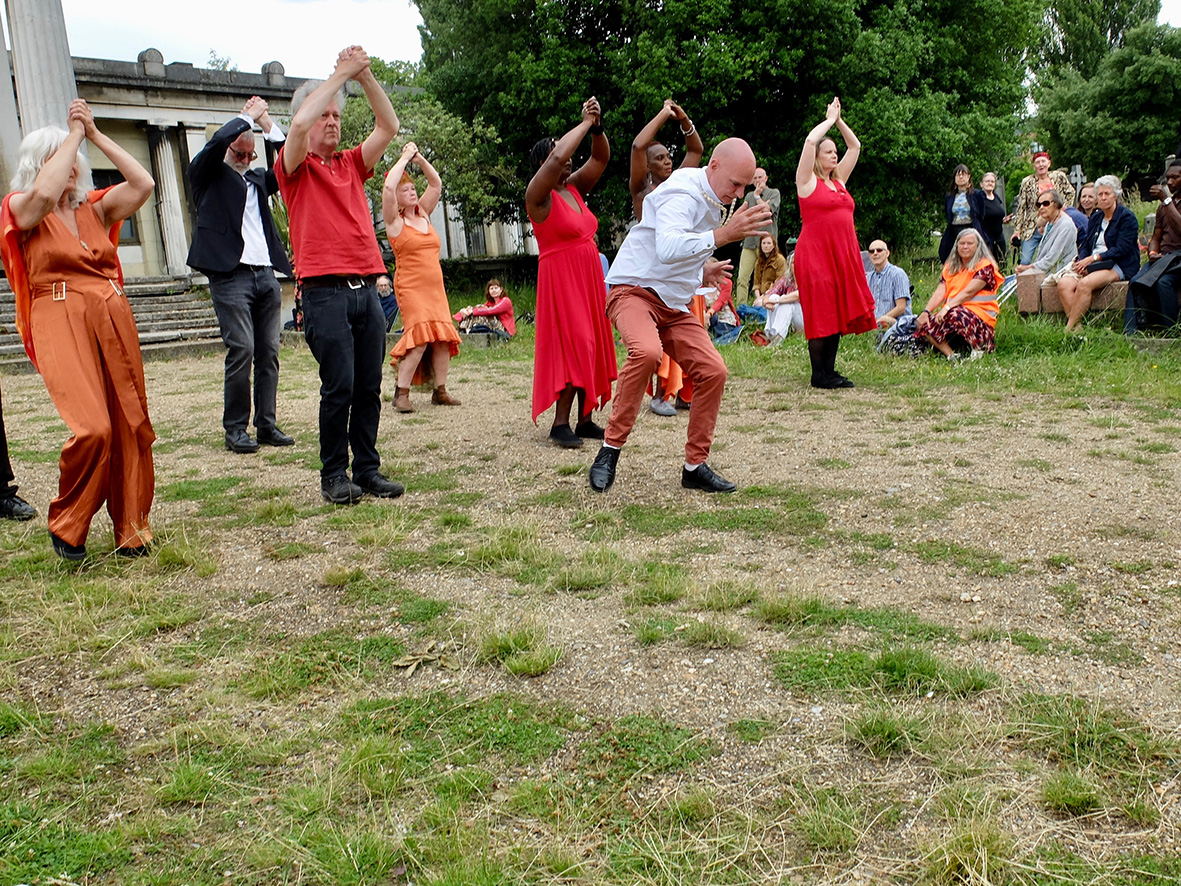
Along with singing and making music together, dance is one of our oldest and most universal human activities. In this time, this mode of expression is often side-lined as a pastime of the young or drunk. My winding and sensuous dances keep my ageing body moving, but also allow my soul to connect with others. One of the advantages of age for me, is a letting go of inhibitions – to be less self-conscious about my image in others' eyes. We bumped into a friend on the way to the cemetery by chance, who told us that dancing in community was what sustained their parents (now late 70's).
Rose Rouse – a passionate dancer and advocate for the 'Advantages of Age' was the instigator of 'Dance Me to Death'. She met Rhys Dennis and Waddah Sinada of Fubunation – young dancers who are exploring black masculinity in their choreography, encouraging diverse collaborations and audiences. Rose was excited by Rhys and Waddah's work. But, in order to make this intergenerational project happen said, "I had to persuade them to do this project with me." They said "Yes", and the project emerged as a collaboration – devising, dancing and exploring their experiences around death and grief. The outcome is a performance, photographs, and documentary film in the making.
The cemetery is a beautiful backdrop of caryatids, columns, and tombs surrounded by trees, and just enough wildness. Reminiscent of the angels that reach out to one another from the top of one mausoleum, the dancers stretch and connect. As the dancers claim the grand steps of one chapel they move, dancing with the edges between life and death. Cello and percussion accompany their coming together in group pieces and duets that are tender with moments of surprising energy.
Informed by mortality, and the uncertainty of Covid rules and weather, this nod to death felt like an achievement against the odds, and a celebration of life.
20 Jun 'This Grief Thing'
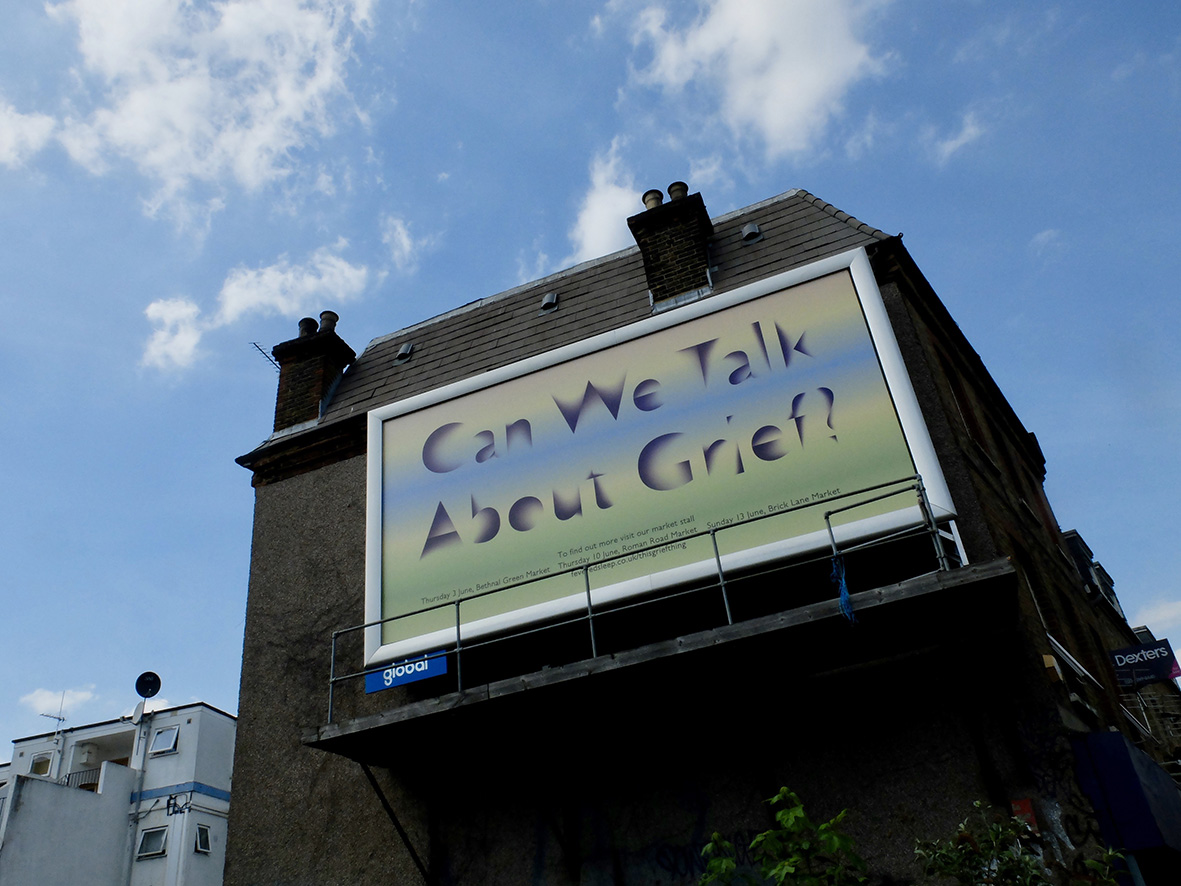
"This Grief Thing is a project that encourages people to think, talk and learn about grief."
Their billboard caught my eye last week as I walked along Dalston Lane. They have curated a number of talks on grief themes, as well as other projects that stir people to engage with the theme.
Tony and I visited their market stall in Brick Lane where Julie, Sam and David folded T shirts and sweltered in the heat like all the other market traders. Poised for spontaneous interactions, the presence of the stall caught the eye of people walking past. As people browsed hoodies and T shirts, conversations were encouraged with the curious. I remembered my days on the Narrow Way initiating random conversations with strangers in the Hackney is Friendly project.
The market stall is full of merchandise designed to open conversations with ordinary people to normalise talking about loss. Brilliant and simple, their slogans champion a way to engage with someone who may feel ill-equipped to mourn, or to respond to someone who is grieving.
"Don't panic if I cry," printed on a red T-shirt particularly appealed to me. We left with "Let me be sad" badges, and some other swag. I shall wear them, ready to see what communication it provokes, hoping to spread their mission of everyday encounters that unlock the taboo around the subject of grief.
18 Jun Summer Solstice Love Ritual
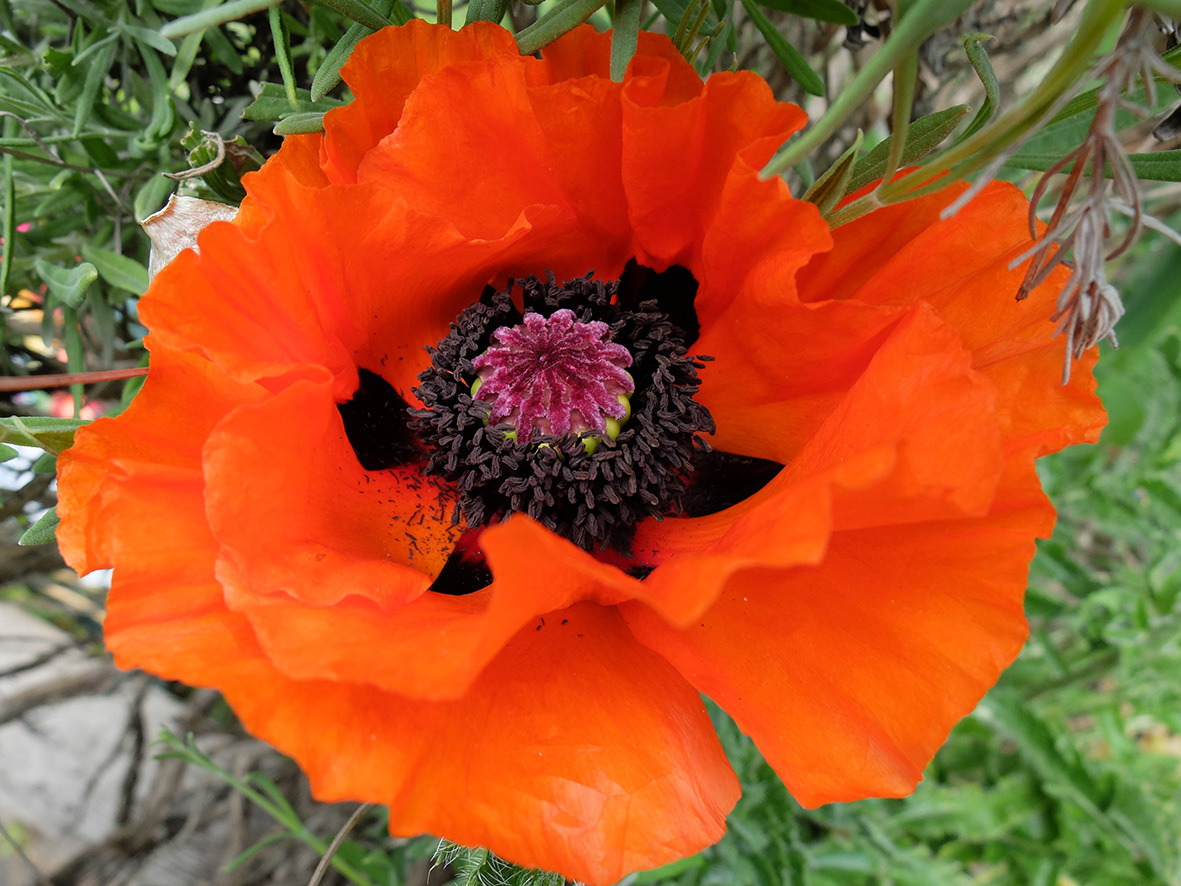
We were hoping to celebrate the end of lockdown on this Midsummer Day, but our plans have been foiled by an extension to distancing rules. But the heart is a flexible organ, and we will offer routes in to love and connection despite, and perhaps because of the distance that remains at present between us in public indoor spaces.
Like 'grief', love is a four-letter word that includes many different feelings and meanings. For me, a way into loving and being loved – whether it is in family, friendship, sensual, sexual, community or other contexts, is to be in connection with myself. Our personal history, personality, cultural and gender socialisation all play their part too.
Connecting with my body, and my inner life is an ongoing process. I didn't begin to unfold my own desires until I was in my forties. Tapping into our longings, asking ourselves what we want can be a huge adventure. It was also really helpful to learn skills that help build the capacity for intimacy.
After 'me', the next step is meeting 'you', the other. It involves noticing whether I feel safe enough to trust another person, whether I want to connect with them. Sometimes this is difficult, and sometimes I might do it too easily. Again, our patterns of relating play a part, as well as having the luck to meet willing others to explore with.
Then what happens when we land in a group. Can we be authentic together, and connect to 'we' space, (as Thomas Hübl calls it)? Our ability to open our hearts when it feels appropriate also comes into play in groups. "We are wired for connection," as Sophy Banks says, "to be held in community", but it can be elusive to find places where all of our parts are welcome.
In synch with the Summer Solstice, can we feel the warmth of sunshine and open our hearts? What is ready to blossom in us? Are we able to appreciate others blooming? Inviting the possibility of vulnerability and shared intimacy, will our group journey into the theme of love elicit tears of longing or the joy of coming together?
Blog Loss How To Create Blog Love Life Loss Kids
Source: http://www.loveandloss.co.uk/blog/
Posted by: johnwasion.blogspot.com


 Why don't we talk about menopause?
Why don't we talk about menopause?
0 Response to "Blog Loss How To Create Blog Love Life Loss Kids"
Post a Comment